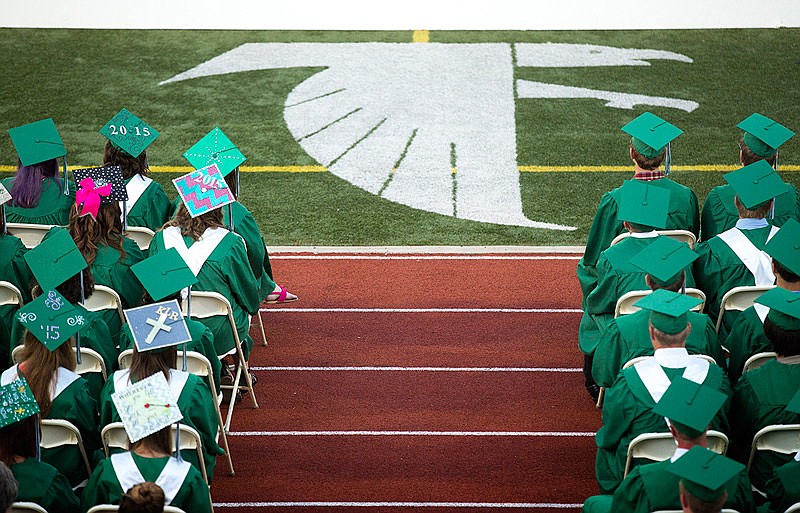The Blair Oaks R-2 school board looked to the future Tuesday night.
Blair Oaks High School Principal Gary Verslues presented a proposal to replace the high school's class rank system with a cum laude system, beginning with the class of 2021.
"This is really nothing new for school districts in the state," Verslues said. He said about half of schools in the same Tri-County Conference have done away with class rank systems.
The advantage of the change would be more students would qualify for admissions and scholarships to colleges and universities if grade point averages formed the hierarchy of academic success instead of students' relative positions to one another within their graduating class.
More students would qualify because currently, a student can have a high grade point average, but it may not necessarily be enough to place them in the top 5 or 10 percent of their class, because of relatively small graduating class sizes overall.
For example, the top 5 percent of the class of 2017 from Blair Oaks High School was only six students. Any scholarships from the University of Missouri-Columbia limited to students in the top 5 percent of their class would only be accessible to those six students.
However, if Blair Oaks utilized a grade point average system instead of class rank, MU would instead look at an equivalent grade point average of 3.91 as a cutoff point, instead of having to be in the top 5 percent. Any student with that grade point average or better upon graduation could be eligible for certain scholarships, as opposed to just a few.
Blair Oaks will have two students in the class of 2018 who will be National Merit Scholars, with ACT scores of 34 out of 36, but both will probably fall outside of the top 10 under the current class rank system, simply because they took the classes they wanted.
Verslues said the change to a grade point average-focused system is something that's been talked about for two or three years, and it's the recommendation he's reached after speaking with students, teachers, counselors and conference principals.
"I'm one that wants to be very hesitant to change something if it's not broken. In the sense of class rank, I think there is some breakage," he said.
Some of the results of the current way to quantify academic success have been that some students take or don't take classes just to compete to be valdedictorian, creating unhealthy competition.
Though the district takes steps to try to ensure students don't feel held back in terms of their class choices because of financial need, students who cannot afford dual credit classes are at a disadvantage in terms of their chances to achieve being valedictorian or salutatorian.
Verslues also felt getting rid of the class rank system would increase student participation in fine arts classes, because students would no longer feel pressured to have to instead exclusively take classes with weighted grades just to keep up with classmates.
He did not think academic motivation would suffer overall. Even if they didn't become valedictorian or salutatorian, he said students would have the added motivation of wanting to achieve cum laude, magna cum laude or summa cum laude recognition levels.
The board will bring the proposal up again next month for more discussion and a vote.
The board unanimously approved the preliminary budget for the 2017-18 fiscal year; it includes a salary increase of $750 for the base rate of certified staff, bringing the rate to $35,250.
Superintendent Jim Jones also explained the board added an increase of $25 per step - per each year of experience - of the salary schedule in the budget. Classified staff received a 50 cent per hour increase.
The board agreed to have a special meeting on June 29 to make final budget amendments and to close the 2016-17 fiscal year.

